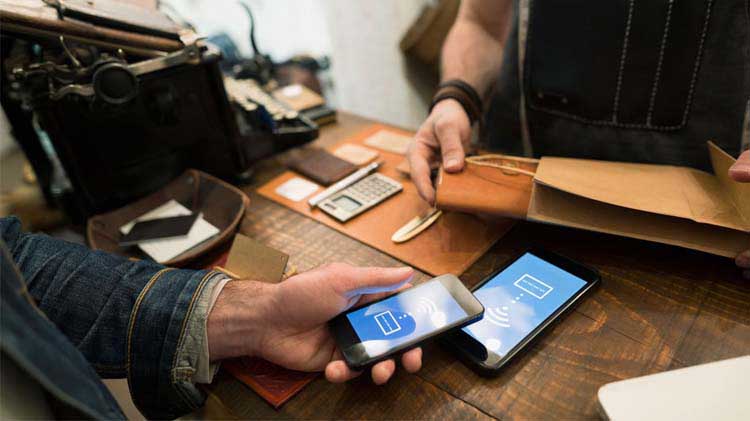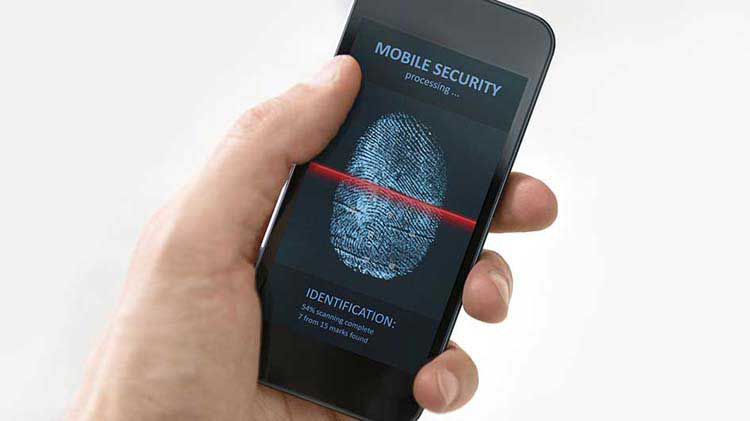Review these security measures for online shopping to help protect your personal information and identity
For a more safe and secure online shopping experience, you might want to know the various options for payment and ways to help protect yourself from scams.
In our wallets, most of us have an average of three credit cards, a handful of gift cards and coupons, not to mention membership cards, a driver's license and receipts. Mobile wallets, which you can use on a compatible smartphone, tablet or smart watch through an app, let you store your cards and coupons in digital form. They allow you to make purchases, apply discounts and use coupons, either online or in-store.
Pros and cons of mobile pay
The goal of mobile wallets is to enable convenient transactions and provide a seamless shopping experience, from quickly purchasing your morning coffee to buying that item in your online shopping cart. Here are some of the pros and cons of using mobile pay:
| Pros | Cons |
|---|---|
| Flexibility to pay within the app, online or at the brick-and-mortar store. | Apps such as Apple Pay and Google Pay are operating-system specific. |
| Works with a wide variety of banks. | Retailer mobile wallets may be exclusive to that store. |
| In-app features and discounts. | Some stores may not yet accept a specific card or support a payment terminal. |
| Loyalty rewards or points. |
Ways you pay
Make mine mobile
Cash and cards may soon join checks as old-time relics as more and more of us scan apps and pay with a smartphone. Alternative payment methods like Apple Pay, Google Pay and PayPal now make up just some of global e-commerce transactions. It is projected that one in two people will be using mobile or digital wallets to the tune of about 4.8 billion mobile wallets in use by 2025.
DIY checkout
Some retailers may make a more aggressive move to eliminate cashiers entirely. The Amazon Go stores offer one model: There are no lines and no checkout, just a check-in with the Amazon Go app. When customers leave the store, the app records what they bought and sends a receipt.
Choosing a mobile wallet
The mobile wallet ― also known as a digital wallet, electronic wallet or e-wallet, with all having slight differences in functionality – that you choose will mostly depend on the device that you use. And you may end up having multiple wallets if you decide to go with a device-specific wallet plus a merchant wallet such as Walmart or Starbucks. So who are some of the "big players" in the mobile wallet space?
PayPal
Is PayPal safe? It is considered one of the safest ways to conduct online transactions. And around the globe, PayPal has almost 392 million active accounts, making it one of the most popular solutions as it works across all major devices and users can manage one account to make online purchases and even transfer money. PayPal also includes a Purchase Protection and Seller Protection feature. Even more, PayPal accepts a total of 25 currencies worldwide.
Apple Pay
This mobile wallet for use on Apple devices was the first in the market and is now available in more countries and in early 2019 was accepted at 65% of retailers in the U.S. Apple Pay is operating-system specific, uses near-field communication (NFC) technology and customers can use peer-to-peer payment. Apple users have experienced seamless transactions within supported apps and sites, making it a convenient solution for their purchases.
Google Pay
If the ability to split a restaurant bill with your friend is an important feature, Google Pay may offer the most flexible way to do so as this peer-to-peer mobile payment option works across devices. Google Pay is also operating-system specific for Android devices, uses NFC technology, works with most major credit cards and is accepted in some transit agencies.
Samsung Pay
Owners of Samsung devices have the option of both Samsung Pay and Google Pay, but one of the options will need to be selected as the default mobile wallet. It's also the most accepted by merchants based on availability as it is compatible across the widest range of terminals because it uses both NFC and magnetic secure transmission (MST).
Chase Pay
Users of the Chase Pay mobile wallet can benefit by having their eligible Chase credit and debit cards preloaded once the app is downloaded, as well as manage their rewards and take advantage of discounts at certain stores.
Walmart Pay
Walmart was the first retailer to get into the digital wallet game and is convenient for those who already have the Walmart app. Users can quickly check out at the register by using any credit card, pre-paid card or Walmart gift card within the Walmart mobile app.
Starbucks
In addition to saving time by ordering and paying ahead, customers can enjoy their coffee or food even more knowing they're racking up coupons and perks with the Starbucks loyalty program — Starbucks Rewards.
Protect yourself before you start shopping
Downloads matter
Download retail apps from reputable sources, such as Google Play or the App Store, to avoid counterfeit apps masquerading as respected brands. Use a secure network (and a separate one, if your internet provider provides the option), not public Wi-Fi. The latter is more susceptible to hacks.
Updates and accesses matter
Is an update to your mobile shopping app available? Download it: online shopping vendors often add fixes to address security weaknesses. In addition, use a screen lock to secure your smartphone or tablet to prevent access if the device is stolen.
Be a good password creator
Digital assistant passwords should be different than those you use for banking — it's just good security protocol. Regularly monitor accounts and contact your bank or credit card company immediately if you see anything suspicious.
Even with a good password, are mobile wallets safe? Mobile wallets can be a more safe and secure payment method than magnetic strip credit cards because their data is encrypted. But like a credit card or a wad of cash, your phone can be stolen. Two-step verification — where you have one strong password or biometric authentication (fingerprint or facial recognition) for unlocking your phone, and then another password or PIN to get into the mobile wallet app — is an important security measure to consider.
Link it to a credit card
Consider linking your mobile wallet to a credit card, rather than linking it to a debit card or being charged through your phone bill. You'll likely get the same protections that credit cards offer, and it allows you to dispute fraudulent charges.
Protect yourself online when shopping
Credit cards are considered the most secure and safe payment method offering a safe online shopping experience. However, there are several things to remember when shopping this way.
- When using Wi-Fi, it’s best not to use public Wi-Fi. Hackers might be sitting close by ready to spy on your online activity.
- Don't email your credit card information to individuals privately offering items for sale.
- Never make online financial transactions through websites or institutions you aren't familiar with. Many thieves set up fake sites to steal information from unsuspecting victims.
- Only use safe websites. One way to help make sure a website is safe is to use only encrypted (scrambled) connections. An encrypted connection is normally indicated by "https://" in your browser's address bar in front of the address of the page you are viewing. The “s” stands for secure.
- Be especially skeptical of unsolicited emails — even those that appear to be from institutions you trust — asking you to follow particular links, respond with identifying information or change passwords. Another common phishing practice is to set up websites that pose as the sites of trusted institutions to gather legitimate passwords from unsuspecting users.
- Be sure to log off completely from any website following an online transaction. Don't just close your browser: Find the link that logs you off.
Protecting yourself after shopping online
- Always review your order confirmations and credit card statements in a timely manner. Staying on top of your statements can help you catch errors and unusual charges.
- If you suspect fraud, usa.gov provides various sites for reporting internet related crimes.
Where can I find more information about online shopping safety tips and scams?
- You can find online security and safety tips for protecting yourself at usa.gov.
- Fightcybercrime.org offers information about how to steer clear of online shopping scams.
The convenience of online shopping and banking won't matter if your actions put your finances or identity at risk. Identity theft is real. By following simple tips to bank online safely and protect your data in the cloud, you can help reduce the risk of identity theft. Taking it a step further, why not contact a State Farm® agent today to talk about identity restoration insurance.




